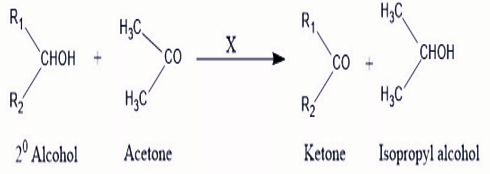A hydrocarbon A (C4H8) on reaction with HCl gives a compound B (C4H9Cl) which on reaction with 1 mol of NH3 gives compound C (C4H10N). On reacting with NaNO2 and HCl followed by treatment with water, compound C yields an optically active compound D. The D is
The Correct Option is B
Approach Solution - 1
Let's break down the reaction step by step:
Starting compound A (C₄H₈): The given hydrocarbon is C₄H₈, which could be butene (C₄H₈), and when it reacts with HCl, it will form C₄H₉Cl (butyl chloride), compound B.
Reaction of B with NH₃ (ammonia): When butyl chloride (C₄H₉Cl) reacts with ammonia (NH₃), it undergoes nucleophilic substitution to replace the chloride with an amine group. This gives butylamine (C₄H₁₀N), which is compound C.
Reaction of C with NaNO₂ and HCl, followed by water treatment: Butylamine reacts with sodium nitrite (NaNO₂) and HCl to form a diazonium salt. When treated with water, the diazonium ion undergoes hydrolysis, resulting in the formation of an optically active product. The product formed is an alcohol with a chiral center, making it optically active.
Therefore, the correct compound B is butyl alcohol (C₄H₉OH), corresponding to Option B.
The correct answer is (B) :  .
.
Approach Solution -2
To solve this problem, let's carefully analyze the steps described in the reaction and deduce the correct product D.
1. Reaction of Hydrocarbon A with HCl:
The hydrocarbon A is a compound with the molecular formula C₄H₈. When it reacts with HCl, the product B (C₄H₉Cl) is formed. This suggests that hydrocarbon A is an alkene, and its reaction with HCl results in the addition of HCl across the double bond, leading to the formation of 1-chlorobutane (C₄H₉Cl).
2. Reaction of Compound B with Ammonia (NH₃):
Compound B, 1-chlorobutane, reacts with 1 mol of ammonia (NH₃) to give compound C (C₄H₉N). This indicates that the chlorine atom in 1-chlorobutane is replaced by an amino group (-NH₂), forming butan-1-amine (C₄H₉N).
3. Reaction of Compound C with NaNO₂ and HCl:
When butan-1-amine (C₄H₉N) reacts with sodium nitrite (NaNO₂) and hydrochloric acid (HCl), a diazotization reaction occurs. The amino group (-NH₂) is converted to a diazonium ion (C₄H₈N₂⁺). The reaction is then followed by the addition of water, leading to the formation of an optically active compound D. The conversion of the diazonium ion to a hydroxyl group (-OH) results in the formation of an optically active alcohol. This process is known as the Sandmeyer reaction, which introduces a hydroxyl group (OH) to form butan-2-ol (C₄H₉OH), a compound with a chiral center, making it optically active.
4. Identifying the Correct Product (D):
Based on the reaction described, the optically active compound D is butan-2-ol (C₄H₉OH), which corresponds to option (B), "CH₃-CH₂-CH(OH)-CH₃." This is the product formed after diazotization and hydrolysis, leading to the formation of a chiral alcohol.
Final Answer:
The correct answer is (B) "CH₃-CH₂-CH(OH)-CH₃."
Top Questions on carbonyl compounds
- Which of the following are neutral?
- KEAM - 2025
- Chemistry
- carbonyl compounds
- Acetone can be converted to 2-methylpropan-2-ol using:
- KEAM - 2025
- Chemistry
- carbonyl compounds
- The correct stability order of carbocations is
- JEE Main - 2024
- Chemistry
- carbonyl compounds
- According to Oppenauer Oxidation reaction, oxidation of secondary alcohol to ketone by reagent (X) in acetone takes place, what is "X" :

- GPAT - 2024
- Organic Chemistry
- carbonyl compounds
- The Gattermann-Koch reaction is used in the industrial preparation of benzaldehyde. The electrophile involved in this reaction is
- CUET (UG) - 2024
- Chemistry
- carbonyl compounds
Questions Asked in KCET exam
- If the number of terms in the binomial expansion of \((2x + 3)^n\) is 22, then the value of \(n\) is:
- KCET - 2025
- Binomial theorem
- A random experiment has five outcomes \(w_1, w_2, w_3, w_4, w_5\). The probabilities of the occurrence of the outcomes \(w_1, w_2, w_4, w_5\) are respectively \( \frac{1}{6}, a, b, \frac{1}{12} \) such that \(12a + 12b - 1 = 0\). Then the probabilities of occurrence of the outcome \(w_3\) is:
- KCET - 2025
- Probability
- If 'a' and 'b' are the order and degree respectively of the differentiable equation \[ \frac{d^2 y}{dx^2} + \left(\frac{dy}{dx}\right)^3 + x^4 = 0, \quad \text{then} \, a - b = \, \_ \_ \]
- KCET - 2025
- Differential equations
- Meera visits only one of the two temples A and B in her locality. Probability that she visits temple A is \( \frac{2}{5} \). If she visits temple A, the probability that she meets her friend is \( \frac{1}{3} \). The probability that she meets her friend, whereas it is \( \frac{2}{7} \) if she visits temple B. Meera met her friend at one of the two temples. The probability that she met her friend at temple B is:
- KCET - 2025
- Probability
In a practical examination, the following pedigree chart was given as a spotter for identification. The students identify the given pedigree chart as

- KCET - 2025
- Genetics


